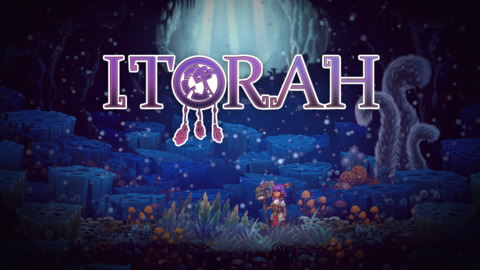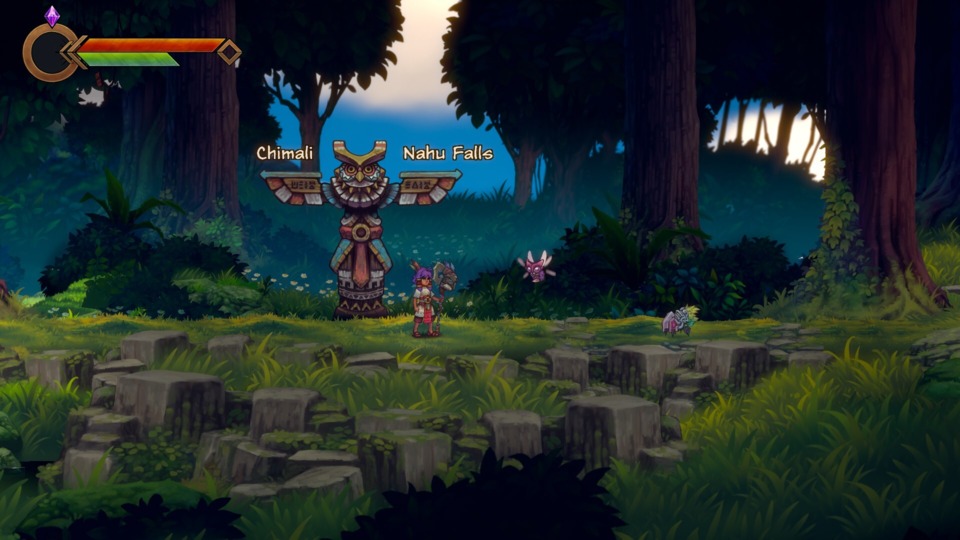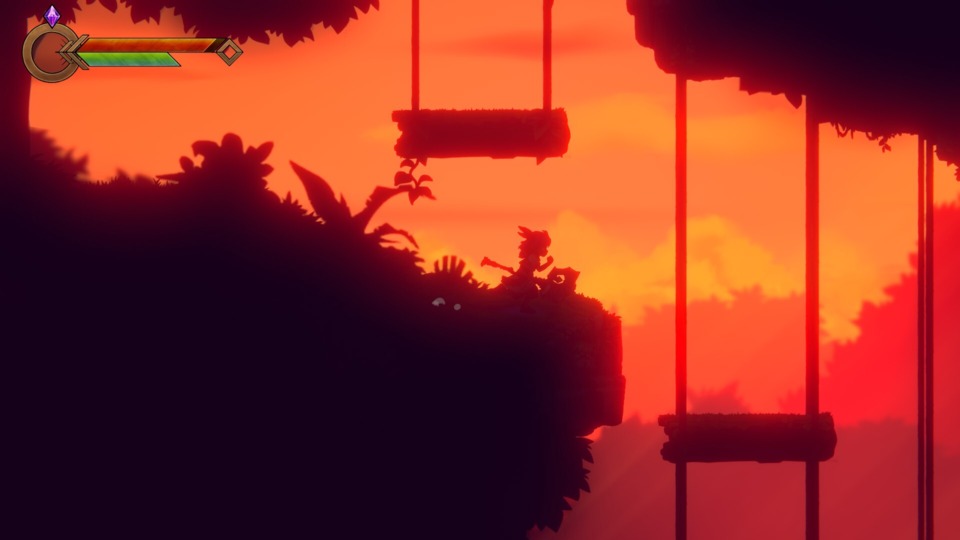
Now that I've made good on a longstanding obligation to a fellow GB blogger with last week's Tower of Time, it's business as usual for the Indie Game of the Week. That is, I'm reviewing another explormer. Quelle surprise. Well, I say "explormer": it has maps and traversal abilities, but it's light on collectibles and very linear so I'm not sure it necessarily counts. Either way, I just picked up a double-jump so I figure it's close enough to pass the smell test. Itorah is the explormer in question, the debut game from German studio Grimbart Tales, and has a sort of Mesoamerican theme (making that two Latin American explormer playthroughs in close proximity, after Guacamelee! 2 back in November) as the world's remaining human being finds a magical talking axe and joins up with a scientifically-curious furry (in the sense that she's driven by scientific curiosity, not that furries themselves are a scientific curiosity, though they kinda are) to explore ruins and learn more about the "plague" that exterminated the rest of our bush league species.
First impressions of Itorah are positive largely due to its gorgeous art and animation work. In that respect it's similar to Lab Zero's Indivisible, with its central character sporting an impressive number of animations for running, jumping, using healing magic, idling, and reacting to things during cutscenes. She doesn't talk, letting her sapient axe Koda do most of the communicating (in more ways than one), but the expressive character animations do a fine task of substituting for any verbal indication of her current temperament or status. Most of the exposition is delivered by your new fuzzy friend Ahui and her brother, who leads her village, as they discuss the next destination for the heroes as they stay one step ahead of the creepy plague monsters. This naturally has you returning to said village frequently, pretty much the only recurring destination given the lack of backtracking, which is where you can also spend some finite resources to either upgrade your healing (which, like Souls, is limited but replenished for free after stopping at a checkpoint campfire; something that's becoming the norm in explormers rather than the exception) or increase your health and stamina gauges, the latter used up whenever you hold down the run button and quickly regenerates once the button is released.

The issues arrive when you're left to your own devices to make your way to the next destination flag. The first is that the game is hopelessly linear: there's very few alternative paths and little to earn for finding them besides cash and items for upgrades, and most of the time you're just following the icon on the map rather than exploring off in random directions and procrastinating. That's often the case for other explormers too, but this game seems far less interested in an open world and more towards a railroaded experience. Not a bad thing at all, as most regular platformers are certainly of that mindset, but a little deceptive given all the other explormer accoutrements that the game presents like the map and traversal upgrades. The second issue is the jumping controls; there's a certain level of commitment to jumps that makes it hard to adjust with air control. It's not quite as bad as, say, Ghouls N' Ghosts where you're pretty much consigned to whatever horrible death lies in the direction you just unwisely double-hopped towards but it can feel oddly restrictive at times, especially if you do a smaller hop and barely cover any distance.
The third issue is the combat, which... well, when the platforming and the combat both feel a bit off, it's not generally a good sign given how little else tends to make up the DNA of an explormer. In this case, the combat has animations as flashy as anything else but includes some odd hitbox collision. It's also kinda dull, as you fight the same enemies over and over (I'm particularly tired of swatting little flying bug guys everywhere I go) with the same three-hit combo and an upwards stab to the point where I now mostly avoid fighting enemies if I can help it. They provide so little currency compared to the chests that they're scarcely worth the trouble. Add to that a very generous amount of health that, with the healing opportunities added on top, makes the platforming something you can sleepwalk. The moderately tough boss fights still require a bit more cautious attention, and there's been at least a couple of challenging "chases" where I've had to quickly platform my way through a gauntlet while something big and nasty is close on my tail, but other than that it's been kind of a breeze.

I don't dislike Itorah. It's very attractive and the stretches of low-effort gameplay can be mildly relaxing, which I guess is a nice way to critique that. I don't get the usual thrill from traversal upgrades I usually do from this genre: they only appear the moment they're needed, and any prior cases where you walked past a barred passage that could've used a specific upgrade are invariably routes to future destinations rather than prizes to backtrack for. Still, though, it's nice to have upgrades like a double-jump and a wall jump just for the promise of more elaborate platforming sequences in the future. Even if the combat's dull I can just skip past it if I like, saving my energy for the boss encounters, and the jumping around is adequate enough despite my poor attempts to describe why "the feel" is just a tad amiss (something that's as hard to expatiate as it is to program in the first place, I know from experience). I've mentally catalogued the game in the same filing cabinet drawer as Owlboy: another game with impressive graphical chops and some mildly intriguing worldbuilding, but let down by its only so-so gameplay loop. I'll come back with some post-game analysis later if anything changes.
Rating: 3 out of 5.
Post-Playthrough Edit: Nothing much changed. It did get a little more challenging though. I even died once, against the final boss.
| < Back to 351: Tower of Time | 001-100 | 101-200 | 201-300 | > Forward to 353: The Spirit and the Mouse |

Log in to comment